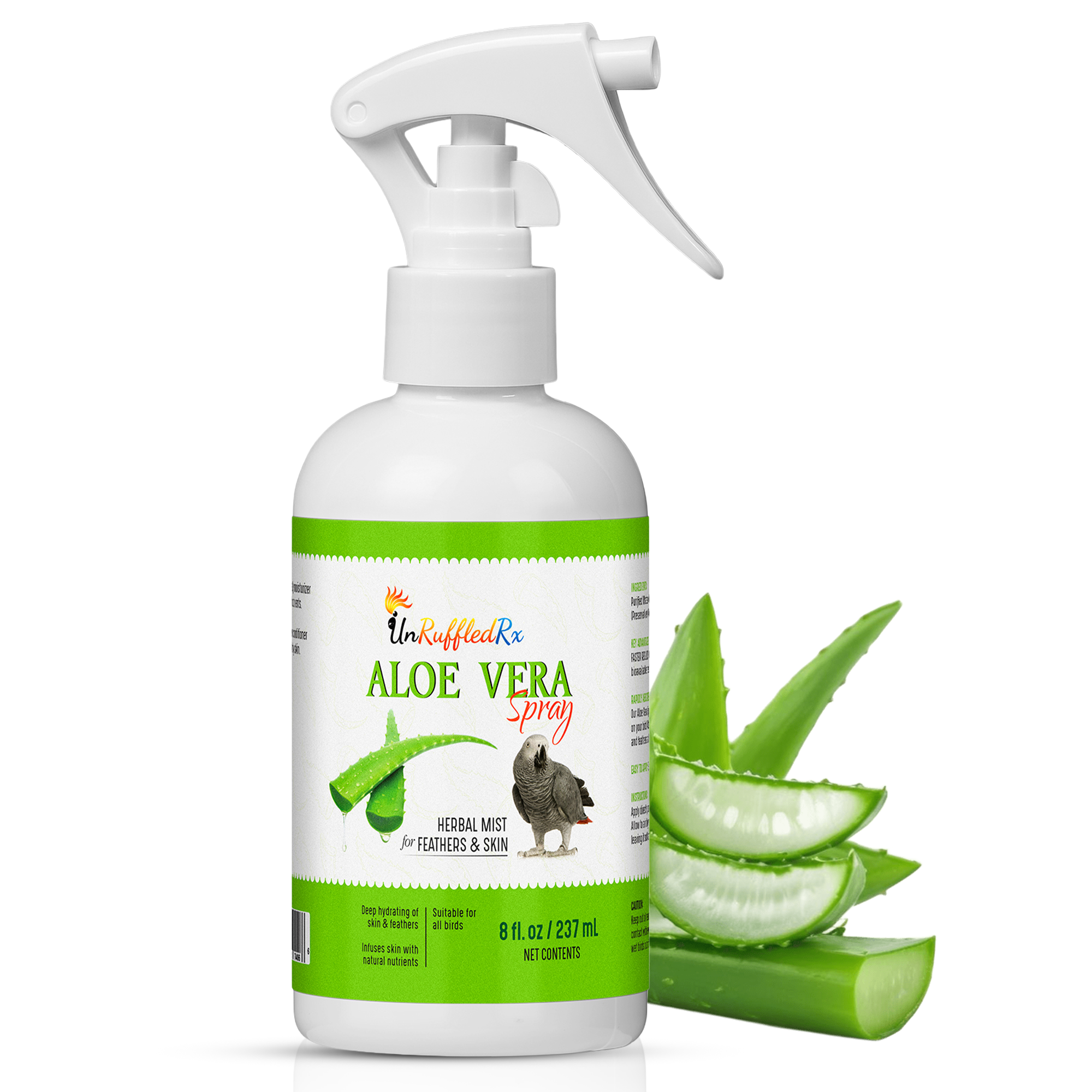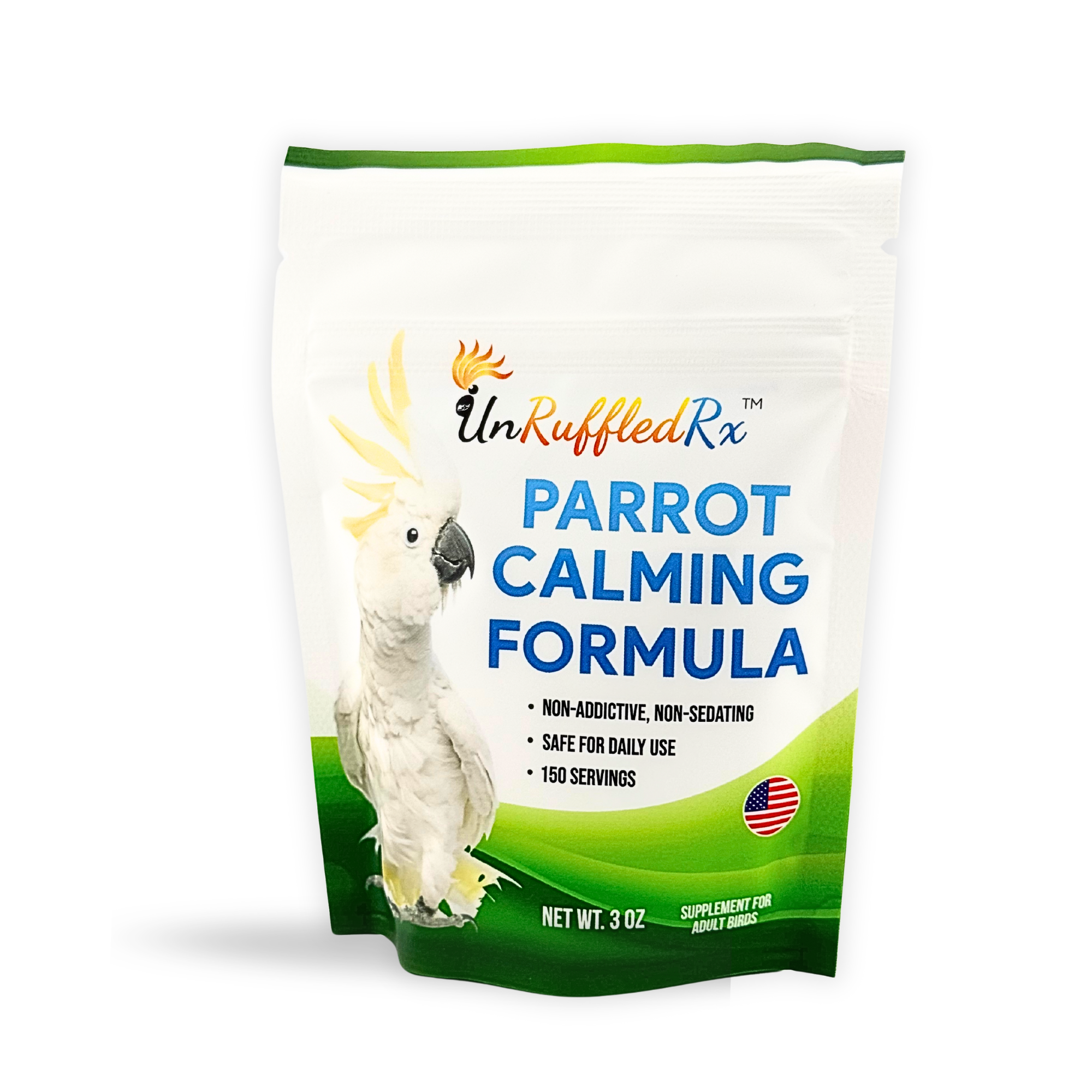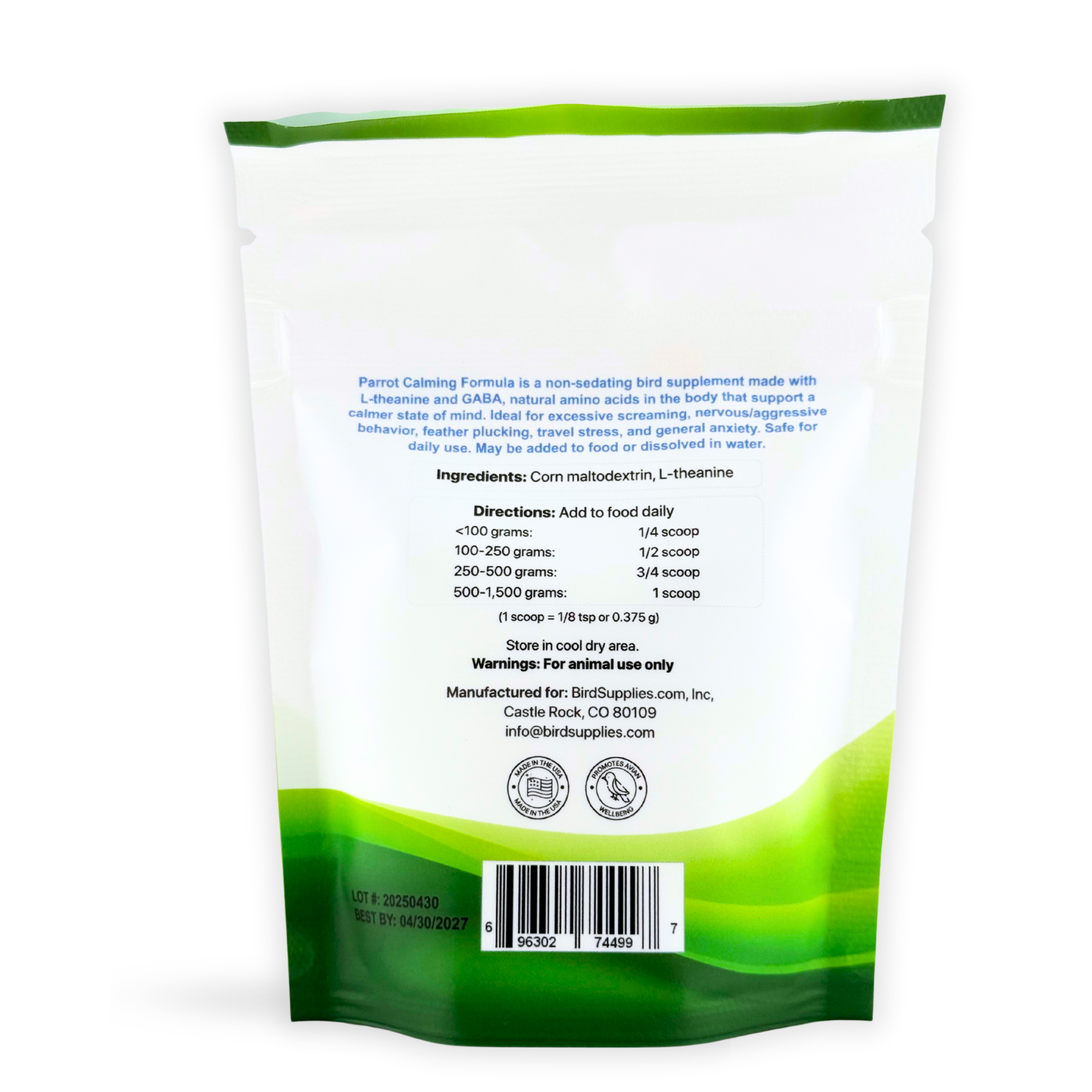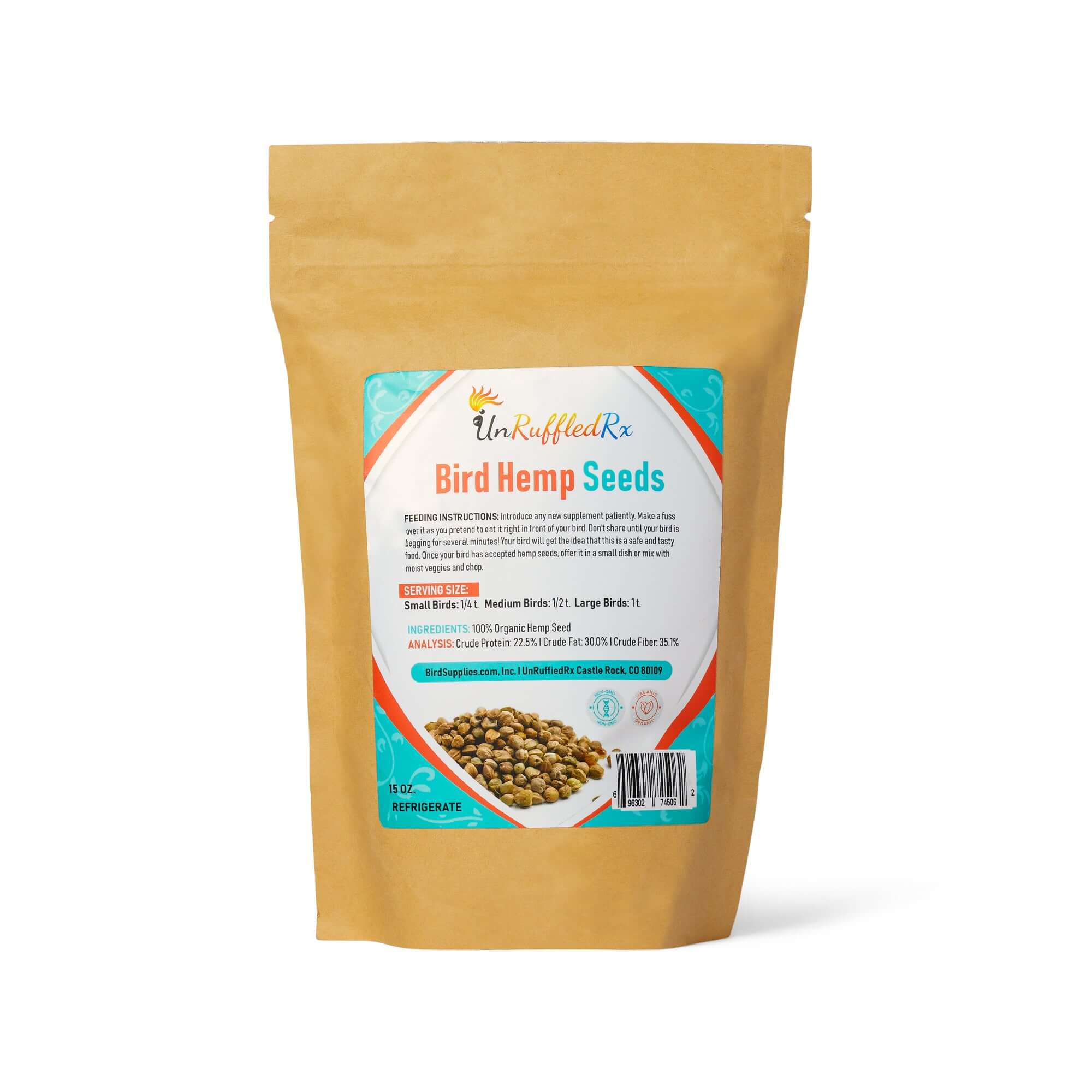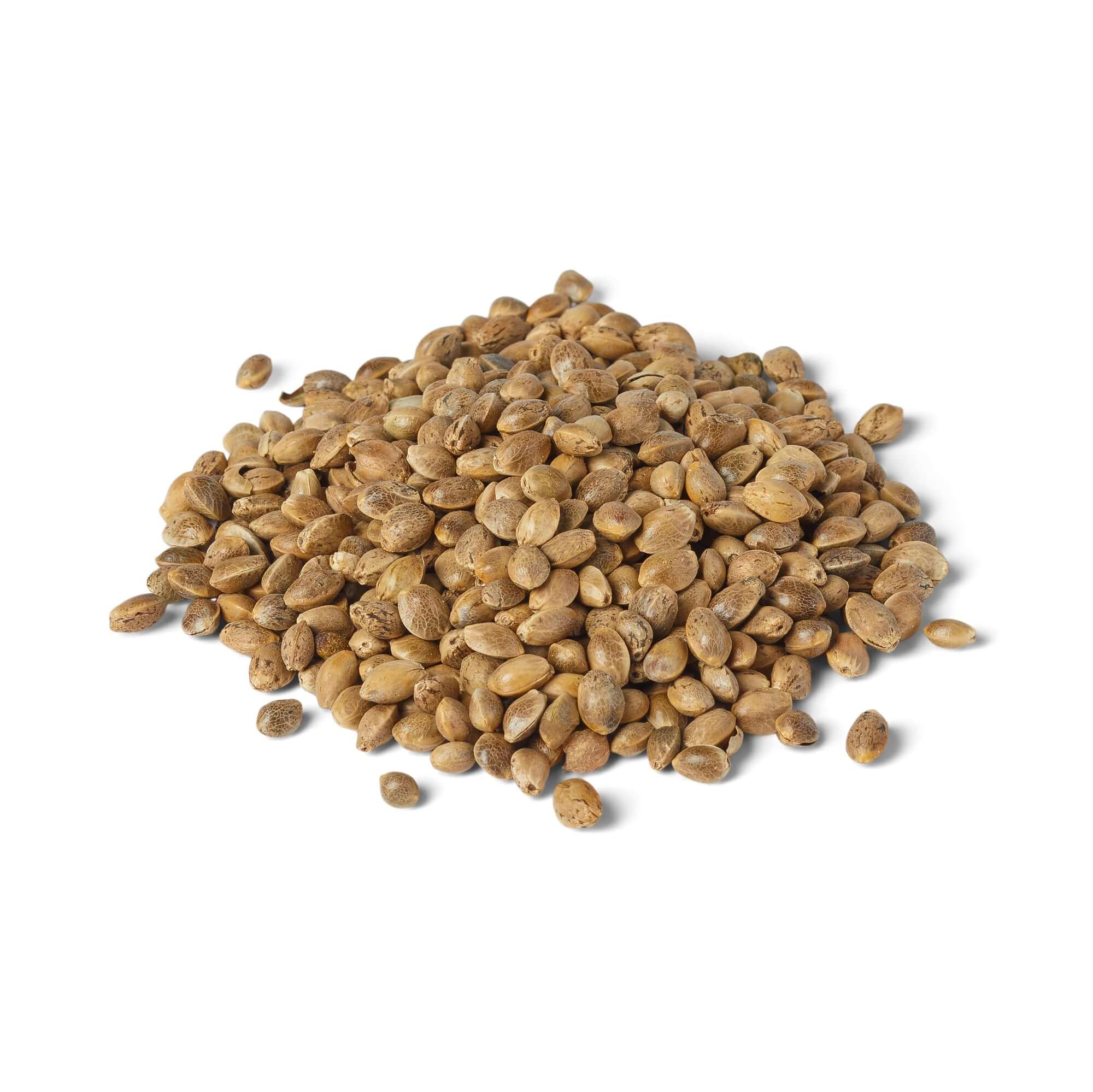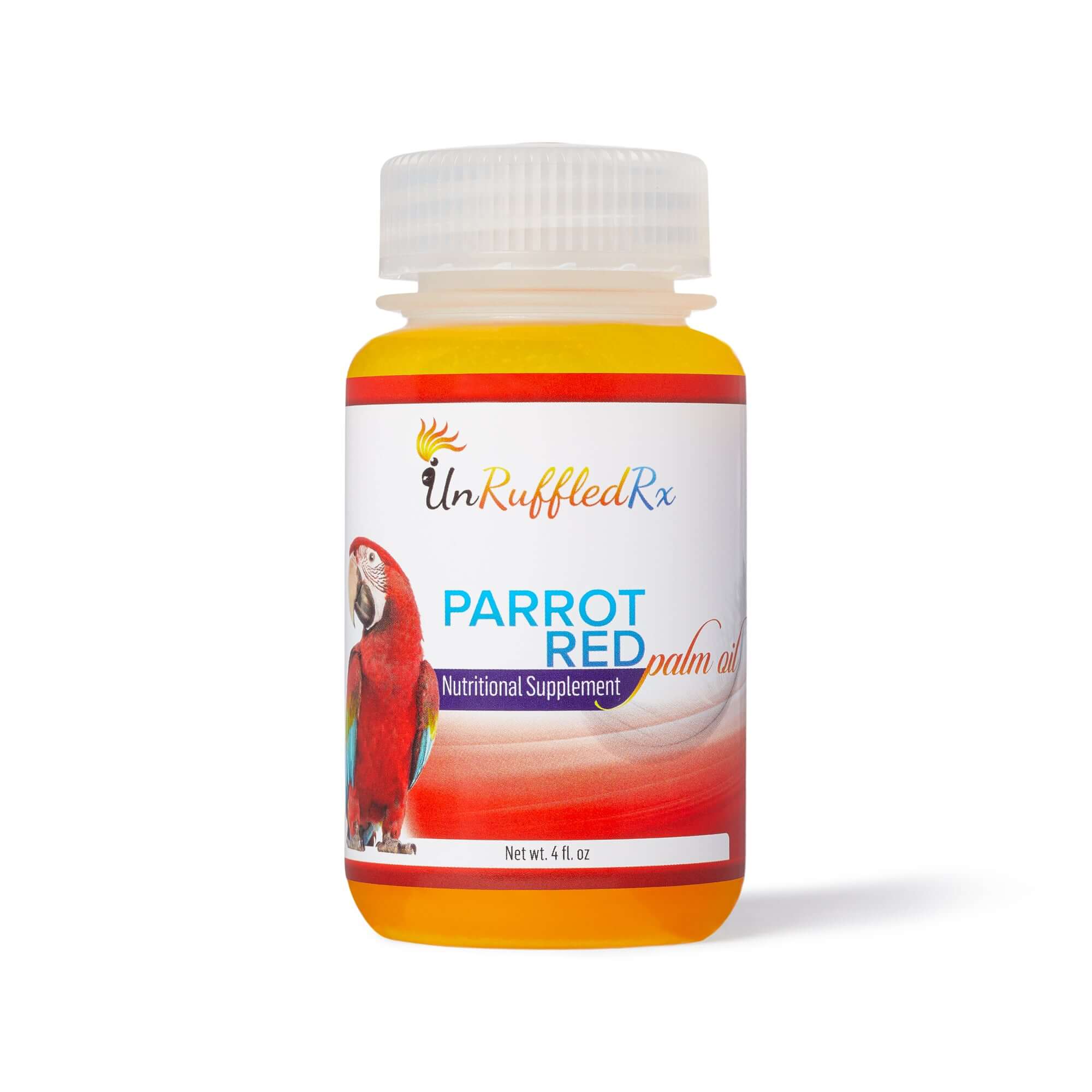So, you think that you want a parrot. Do you know how to care for one?
Parrots are exciting and unique pets, and they can truly be a friend for life if they’re cared for properly. Since you’re reading this, it’s safe to assume that you only want the very best for your bird. There are a lot of seemingly small aspects to parrot care that, if not met, can result in a problem bird. Do you think you’re a good parrot parent? Let’s see if you know the answers to these 10 questions on common problems or points of confusion on how to care for a parrot.
#1 Seed Is Good For Parrots.
TRUE FALSE
Novice bird owners sometimes believe that a bird can live on seed alone. In reality, this isn’t a suitable diet for any bird, and especially not for a parrot. What you might not know is that seeds should only comprise about 15%-25% of the bird’s diet, especially once the parrot reaches full maturity. Too many seeds can cause serious issues due to high fat content, and because birds full of seed aren’t going to seek out all the other goodies they need for a well-rounded diet.
Too much seed is a big factor in obesity among parrots. Opt for goodies that are lower in fat and introduce other important nutrients. As a general rule, about half of a parrot’s diet should consist of a high-quality pellet that’s formulated for its specific needs. The rest needs to be a mix of fruits, vegetables, nuts, and just a little seed. Some birds are resistant to change, so introduce new food slowly if your bird isn’t used to a varied and healthy diet. Obesity can lead to deadly liver disease, so it’s critical to start changing your bird’s diet and start ramping up the amount of exercise it gets as soon as possible.

This little cockatiel was on an all-seed diet and ended up with an impacted nasal cavity from a Vitamin A deficiency.
#2 Birds Require AT Least 10 Hours Of Sleep per Night.
TRUE FALSE
Just like humans, parrots get irritable and easily stressed if they don’t get enough sleep. Some types of parents do great on a schedule similar to humans, while others require artificially-induced dark and quiet. Remember that no matter where you live, unless you’re on the Equator, there may be significant differences in light and dark requirements at different seasons throughout the year. For instance, areas with extremely short days in the winter may require that you get more and brighter UV lights for your feathered friend. When days grow long in the summer, your bird may have to retire to a darkened room long before sunset in order to maintain a healthy sleep schedule. Get to know where your bird is from and how long the days and nights are there, then use that as a thumbnail for when and how long your parrot should sleep.
Parrots that don’t get enough sleep may experience behavior challenges and hormone surges, so it’s really important to keep them on a schedule once you determine what’s appropriate for your bird’s needs. Just like a human toddler, the sleep schedule is critical for good behavior and overall good health. If your bird doesn’t cooperate with a good sleep schedule, it may not be getting enough bright, full spectrum light during the day, and/or its sleeping area may not be dark and quiet enough during its resting time.
#3 Birds Are Content To Stay In Their Cages.
TRUE FALSE
It’s pretty easy to look and say that your bird’s cage looks roomy enough. It might even fit perfectly with the sizing standards you’ve found online or through bird experts. However, there are a number of different factors that determine how much space your bird needs. Obviously, the size of the bird itself is a big one. Does it get out often, and can it fly? Birds that get bored extremely easily or show signs of depression may just need a little more space and mental stimulation. Whether that’s in-cage space or just exploring more often depends on what’s available to you, but a larger cage may be helpful as well.
Birds that don’t get enough exercise may be susceptible to a number of different health issues. Good exercise, especially flying, helps bulk up muscle mass and improves muscle tone. Healthy muscle is an essential part of burning calories, so it directly affects your bird’s energy levels and ability to properly process food without getting fat. A well-exercised bird is far less likely to suffer from boredom than one that has restricted space, but it still needs a variety of mentally stimulating activities as well.
#4 Poisons & Toxins Are The Biggest Household Hazard For Pet Birds.
TRUE FALSE
There are a huge range of toxic substances n ordinary homes and your bird is at risk. Not only do curious birds eat or ingest toxins, such as medications, they also inhale them. General household cleaners emit toxic fumes that injure your birds super efficient respiratory system. Think about the fumes you smell from bathroom cleaner to ammonia & bleach. How about oven cleaner, glues, nail polish remover, and paint. Teflon is another huge danger for parrots.

Another big risk to your parrot is electrical cords. In the wild, parrots do have to know how to maneuver around trees and other obstacles mid-flight, and they’re generally pretty good at staying away from potentially harmful things. That said, there is no analog for many household hazards in the wild, so it’s understandable that, even with their extreme intelligence, parrots still get hurt by things that humans might not even think about. It’s not unusual for a parrot to be able to remove lids from containers, and they’re intensely curious about anything in their environment. Both of these factors lead to a high risk of injury no matter how careful you are to keep your bird safe.
Parrots are extremely curious and will stick beaks, toes and tongues into anything they can reach. Unfortunately, this sometimes includes electrical outlets. Exploratory nibbling may also reveal the wonders hidden within a plugged-in extension cord, too, and to potentially serious avian injury. Get to know the proper way to administer first aid to a burned bird, and keep an extra-careful eye out whenever there are open heat sources or containers of chemicals in your home. Some “parronts” use plastic electrical outlet safety covers, but others find that their birds think they’re fascinating and spend extra time trying to pry them out of the wall.
Parrots are also extremely social, making relationships with their owners and other household pets. Make sure that you properly supervise your pet anytime that it is out of its cage.
#5 A Hormonal Bird Is Apt To Be Nervous & Irritable.
TRUE FALSE
Irritable or nervous parrots may have a problem, and it might not be what you think. Parrots have periodic hormone surges when they’re preparing to mate, and can have them far more often in an average home setting. Why does it happen more often? Simply put, it’s because so many people don’t quite understand parrot body language and instinctual needs. Between the way that people interact with birds to the way that houses are arranged, there are a lot of daily signals that can induce mating behavior in your bird.
Humans tend to want to pet animals, and usually that’s a good thing. Parrots like to be petted too, just in a very different way than a dog or cat might appreciate. In fact, giving full-body pets like you might do to a dog is a primary cause of hormone surges because of its similarity to natural bird mating behavior. A little caress on the feet, side of the beak or above the eyes is fine, but it’s critical for your bird’s health that you keep it above the neck. Learn how to pet a bird here.
#6 Birds Molt All The Time, Like A Shedding Dog.
TRUE FALSE
Most parrots only molt once or twice a year, and it’s generally at a fairly consistent time each year. If your bird is molting more often, there’s a chance that something more serious could be going on. The small, downy under feathers may be shed throughout the year. First, make sure you know the difference in appearance between molting and feather picking, and then research the different issues that can arise with each.
Surprisingly, excessive or irregular molting may be caused by too little direct sun, or by inconsistent bedtimes. Changes in diet, hormone surges, or other relatively common occurrences may cause molting inconsistencies. Feather picking, on the other hand, can result from a wide range of issues, including stress, boredom and nutritional deficiencies. Don’t forget that birds require a little different nutrition while they’re molting; namely, this is a good time to give them a pellet with a little more vitamin, fat and calcium content.
#7 Parrots Can Have Allergies.
TRUE FALSE
The answer is a resounding yes: Parrots can, in fact, suffer from food and inhalant s just like humans do. Unlike most seasonal allergies in humans, though, bird allergies have potentially deadly consequences. Thus, it’s absolutely critical that you know the signs of respiratory distress in your bird. Even if you’re not sure you’re reading the signs right, always take your parrot to the vet if you suspect a breathing problem.
Once a parrot is diagnosed with allergies, there are several different ways that your vet may try to manage them. Options may include shots that the bird has to get in the veterinary office, while some relatively simple DIY bird allergy management techniques may prove effective. Birds that experience allergies during a particular season one year are likely to suffer from them the next, so mark it on your calendar and try to get ahead of the respiratory distress.
#8 You Should Never Take Your Bird Outside.
TRUE FALSE
As ludicrous as it might sound, going for a walk around the neighborhood with your pet isn’t reserved for dogs and cats. With a proper bird harness, you can safely take your bird for pleasant strolls through the park and on new adventures of discovery. If your bird’s wings aren’t clipped, this is a great way to let it get some flight time in while getting some much-needed stimulation.
If you’ve never used a bird harness before, it’s important to do a little initial training. It’s new, so it may scare your parrot on the first try. With patient training, it may quickly become the bird’s new favorite thing to use. Birds that are allowed to fly on walks often have a better level of well-being, but make sure to stay clear of anything that could cause the leash to hang up or get tangled.
#9 Responsible Parrot Owners Have And Use First Aid Kits.
TRUE FALSE
You have a first aid kit for yourself, and it has probably come in quite useful more than once. Birds don’t get injured everyday, but even injuries that seem minor can be catastrophic if they’re not dealt with immediately. A parrot will naturally try to hide any illness or injury because such a thing would get it killed in the wild, but that means you need to be extra vigilant about treating every injury as if it is serious. Check out our FREE Bird First Aid Guide Here.
Gather a parrot first aid kit to keep with you wherever you go with your parrot. Have one within easy reach at home, in the car, or at the bird sitter’s to help safeguard against accidents. If your parrot does get injured, this is the kit that will allow you to administer timely first aid. The next step is to take your bird to the vet for a complete checkup to ensure it didn’t sustain any dangerous injury or contract secondary infections.
#10 Parrots Enjoy Going On Vacation.
TRUE FALSE
Let’s end on a fun note. Are you worried about going on vacation and leaving your bird with a caretaker for extended periods of time? There’s no reason to worry. In fact, hundreds of parrot owners simply take their bird with them on vacation. Sound daunting? Surprisingly, it really isn’t.

The first step to taking vacations with your bird is to prepare a good travel kit. Obviously, this must include a well-ventilated carrier for the parrot with plenty of space, as well as its food, a water dish and a few toys. Travel perches or bird car seats fasten securely to a vehicle seat so that your parrot can get out of the carrier and ride next to you as long as the windows are rolled up. A typical dog or cat carrier with a wire mesh door and open vents works well for most parrots, but an acrylic bird carrier gives it a much greater feeling of freedom to help reduce stress. Water dishes specifically for travel are designed with a “spill proof” rim so that your bird doesn’t get splashed while underway, but still has consistent access to water.
Before you hit the road, make sure to call ahead to line up bird-friendly hotels along the route. Surprisingly, a lot of hotels that allow cats and dogs will also allow a bird, especially if you can assure the manager that your parrot is well-behaved.
Don’t worry if you missed a few of these – a lot of attentive and responsible parrot owners do. Keeping parrots healthy and happy is an ongoing learning experience, and collective knowledge about these animals improves every day. Subscribe to the blog feeder to keep up on the latest developments in parrot care, and pick up fun trivia and parrot-related news.
So, how'd you do? Let us know in the comments section. We'd love to see pictures of how you've set up your parrot care routines.
Hey, please leave a comment or share this on your social media if you love this post!







